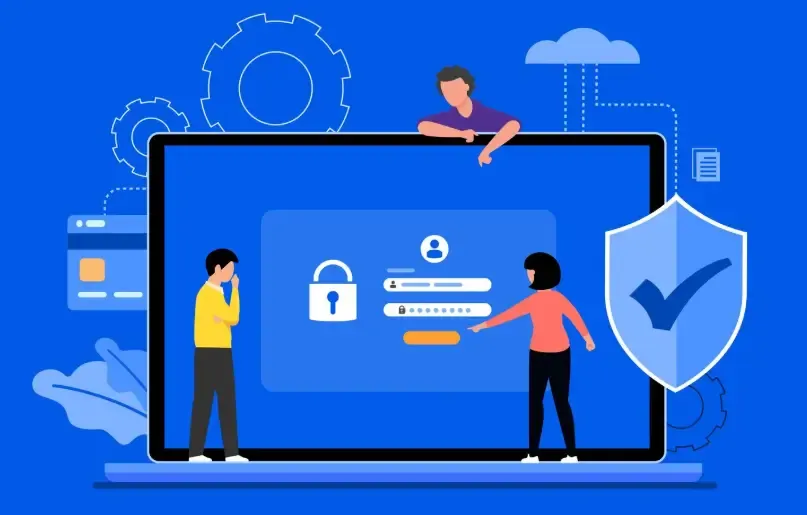IP Lookup vs WHOIS: Key Differences and Uses
I believe everyone has heard of the concepts of "IP query" and "WHOIS query." Whether it's cross-border e-commerce, website administrators, or ordinary users in network security who want to understand the ownership information behind a website, it's essential to learn how to correctly use these two query tools. Next, I will provide a detailed introduction to give everyone a comprehensive understanding of the differences between IP query and WHOIS query.

1. What is IP query? — The "map" of positioning and belonging
IP Lookup refers to querying a certain IP address's network and geographical information through an internet database. It can tell you:
The geographical location of the IP (country, province, city, region)
The belonging Internet Service Provider (ISP)
Is it a data center, proxy, or VPN node?
The autonomous system number (AS number) and network type of the IP.
Sometimes it can also determine whether there is a risk or if it should be blacklisted.
Application example:
When you find that there is a large amount of foreign traffic on your website, IP lookup can help you understand whether this traffic comes from normal users, proxy servers, or potential attack sources.
II. What is WHOIS query? - Revealing the profile of the "owner" behind the domain name.
**WHOIS query (pronounced "who is")** is a protocol used to query domain name or IP registration information. Through it, you can learn about:
Registrant of the domain name or IP (individual or organization)
Registration Time, Expiration Time, Registrar
Administrator or technical contact email (if not hidden)
Domain DNS Server and Record Information
Application example:
If you want to know who registered a suspicious website and which registrar purchased the domain, you can use a WHOIS lookup.
Note: In recent years, influenced by GDPR privacy protection, many registrars have anonymized registrant information (displayed as "Privacy Protect" or through proxy companies), and ordinary users may not see the real name and contact information.
3. IP Query vs WHOIS Query: The Core Difference is Clear
| Comparison dimension | IP Query | WHOIS query |
|---|---|---|
| Query object | IP address | Domain or IP address registration information |
| Return result | Geographical location, operator, network type, AS number | Registrant, registrar, registration date, DNS information |
| Main Purpose Analysis | Access sources, prevent abnormal access | Domain ownership query, source tracing and accountability, filing review |
| Source of information | IP geolocation database, ISP data | Registration database (domain registrar, RIR) |
| Degree of Information Disclosure | High, mostly can be checked. | Subject to privacy protection restrictions. |
| Typical user | Security personnel, operations analyst, advertiser | Webmaster, domain investor, legal personnel |
✅ One-sentence summary:
IP lookup is "looking at where it comes from," while WHOIS lookup is "looking at who is using it."
4. Practical usage scenarios: When to use which?
Scene ①: Website Traffic Analysis / Anti-Bot Traffic
Use IP queries to obtain visitor geographical distribution, operator types, and identify abnormal access regions.
Scene ②: Domain Registration Investigation / Brand Protection
Use WHOIS inquiry to verify domain registration information, owner, registration duration, and prevent brand counterfeiting.
Scene ③: Network Attack Traceability / Risk Control Investigation
Combine the two: first use IP lookup to check the source region, then use IP WHOIS to check the registered organization and trace the responsible party.
Scenario ④: Cross-border Risk Control / Anti-fraud System
Combine IP lookup + WHOIS + browser fingerprinting (ToDetect) to identify suspicious behavior from three dimensions: "geolocation + registrant + device characteristics."
Five,ToDetect browser fingerprint detectionTool: Deeper User Identification
Relying solely on IP queries and WHOIS sometimes cannot identify the "impostor." At this point, the ToDetect browser fingerprint detection tool is needed.
ToDetect can generate a unique device fingerprint through browser parameters (such as operating system, resolution, fonts, plugins, etc.), thus functioning in the following scenarios:
Identify multiple registrations or attacks from the same device—recognize it as the same terminal even if the IP is switched or a VPN is used.
Prevent multi-account cheating - Quickly mark risks for multiple accounts detected with the same fingerprint.
Auxiliary IP and WHOIS Analysis — When IP or registration information cannot be verified, fingerprinting provides additional criteria for judgment.
Enhancing the anti-fraud system - building a multidimensional identity recognition system combined with IP data.
6. Common Issues and FAQs Regarding IP Lookup and WHOIS Checks
Q1: Does WHOIS inquiry leak privacy?
No. Registrars typically offer privacy protection features, allowing users to hide their real contact information.
Q2: Can IP queries be precise to the street level?
No. IP location tracking is usually only accurate to the city or regional level and is greatly affected by ISPs and proxies.
Q3: What should I do if I can't find the registrant information in the WHOIS query?
Privacy protection or proxy registration may have been enabled. You can check the registrar's email contact channels or use RDAP for inquiries.
Summary
Whether you are a technical person or an ordinary user, understanding the difference between IP lookup and WHOIS lookup and using them appropriately is fundamental to network security and compliance management. With the ToDetect browser fingerprinting tool, you can more accurately identify visitors, analyze risks, and protect website security in the ocean of information.
 AD
AD

